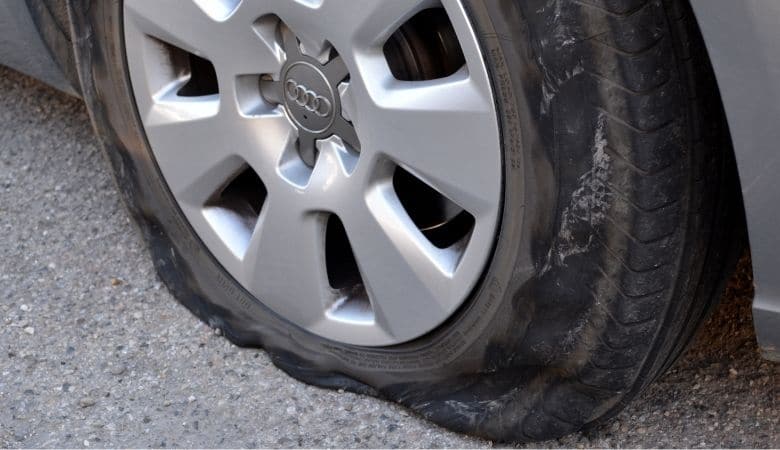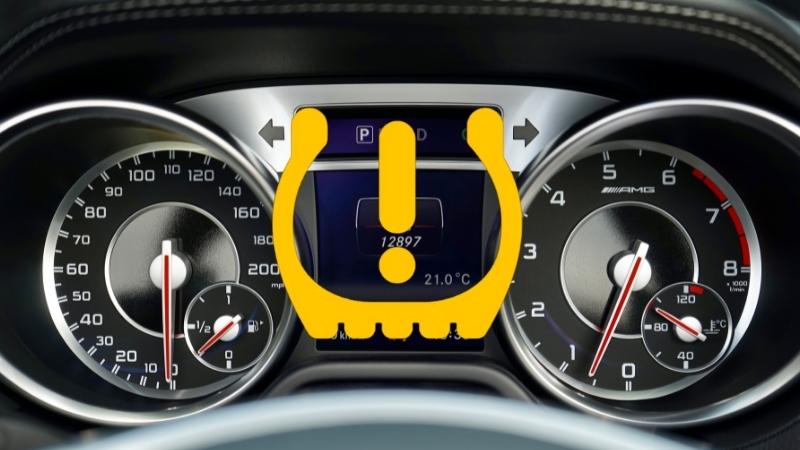Flashing dashboard lights is a huge concern for car owners. It most times indicates a problem that must be attended to immediately.
A tire pressure light is no different; when it comes on, it notifies you that your tire pressure is low and must be resolved immediately to guarantee the safety of the cars and, by extension, the tires.
However, what does a flashing low-pressure light mean? And how does it affect driving conditions?
This article examines the reason for a flashing tire pressure light and how far you can drive with a “Low Pressure” light flashing.
Flashing Tire Pressure Light: What it Means

A flashing tire pressure light typically indicates that there’s some sort of issue with the automatic Tire Pressure Monitoring System (TPMS) of your vehicle’s tires. It usually means that one or many of the car’s tires are underinflated.
Vehicles did not always have automatic tire pressure monitoring. Before the TPMS, car owners had to examine their tires manually to determine low pressure: either by looking at them or using a pressure gauge.
However, it was never accurate to tell just by looking that the tire pressure was low, and the car owners with a pressure gauge did not check regularly. Consequently, many automobile accidents occurred due to the inability to detect a drop in tire pressure.
Nevertheless, in 2007, the US government passed a law to install a TPMS in all new car models.
What is a Tire Pressure Monitoring System (TPMS)?
The tire pressure monitoring system, or TPMS, is a sensor system that notifies you when your tires are underinflated. The TPMS measures the pressure in your vehicle’s tire using sensors contained in the tires. When one sensor detects inadequate pressure in the tire, the whole TPMS fails.
The TPMS Sensor usually appears as a yellow or orange light on the dashboard. It is shaped like a semicircle with an exclamation point in the center. It is possible that some older vehicles may not have this mark. They usually have an orange or yellow indicator that reads “TPMS.”
Maintaining tire pressure is crucial for several reasons. Under-inflated tires have a shorter lifespan; they consume more fuel, do not grip the road well, and hydroplane easily. Notably, underinflated tires can cause traction problems during braking and turning, posing a danger to driving.
The purpose of the TPMS is to notify you when the tire pressure drops too low, which creates unsafe driving conditions like severe tire wear and failure.
Here’s a great video explaining what a TPMS sensor is and how the system works:
3 Common Reasons For a Flashing Tire Pressure Light
A flashing tire pressure light on the dashboard should not cause panic. Most of the time, you can fix it yourself.
Nevertheless, car owners should never ignore a flashing light on the dashboard. It is best to have it checked immediately. Below are some reasons why TPMS lights flash:
1. Slow Leak or Low Tire Pressure
Low tire pressure or slow leaks are the most common causes of a flashing TPMS light. Low tire pressure or slow leak is caused when air pressure of the tire(s) falls below the recommended range.
Slow leaks result from punctures in the tires and must be patched; however, low pressure can be attributed to loss of air pressure from normal car usage, which can recur every month. You can easily fix this by inflating the tires to the pressure recommended by the manufacturer.

2. Failure To Reset TPMS
The TPMS is designed with a detection threshold that notifies the car owner when the tire pressure drops to a certain level. However, this threshold must be set, especially after fixing your wheels or adjusting tire pressure. Failure to reset the TPMS following the manufacturer’s manual will cause the TPMS to indicate a false pressure problem when in truth, your tires are fine.
3. Faulty TPMS
The TPMS can become faulty, causing the tire pressure light to flash continuously for 60 to 90 seconds before remaining permanently on. At other times, it may remain off, without an indication, even when you have a flat tire. Once this is detected, quickly get the TPMS fixed to mitigate the chances of losing your tires or having an accident.
How Far Can You Drive With a “Low Tire Pressure” Light Flashing?
There are no established safe distances or speeds for driving a vehicle with low tire pressure. This would result in higher fuel consumption and tire wear-outs, resulting in blowouts and, ultimately, accidents. It’s best to check your tire pressure right away if your tire pressure light starts flashing as you drive.
Nevertheless, we understand that tire pressure light flashes without warning and could happen in the middle of the road. In such cases, turn on your hazard lights and keep your speed as low as possible as you drive to the closest safe location.
Conclusion
Whenever you notice a flashing tire pressure indicator on the dashboard, pull over immediately and check your tire pressure using a pressure gauge.
Inflate the tire to its recommended pressure, if under-inflated, and monitor the light as you drive to ensure it stops flashing.
However, if the flashing continues, it is best to have it towed to your local mechanic and have your tires checked.
Hi, my name is Niklas, the head content creator & CEO of Whirling Wheelz. I am very interested in vehicles of all kinds, mainly cars. I have a car mechanics degree from high school and a big hobby of mine is to follow the WRC (World Rally Championship) both online and through travel.


